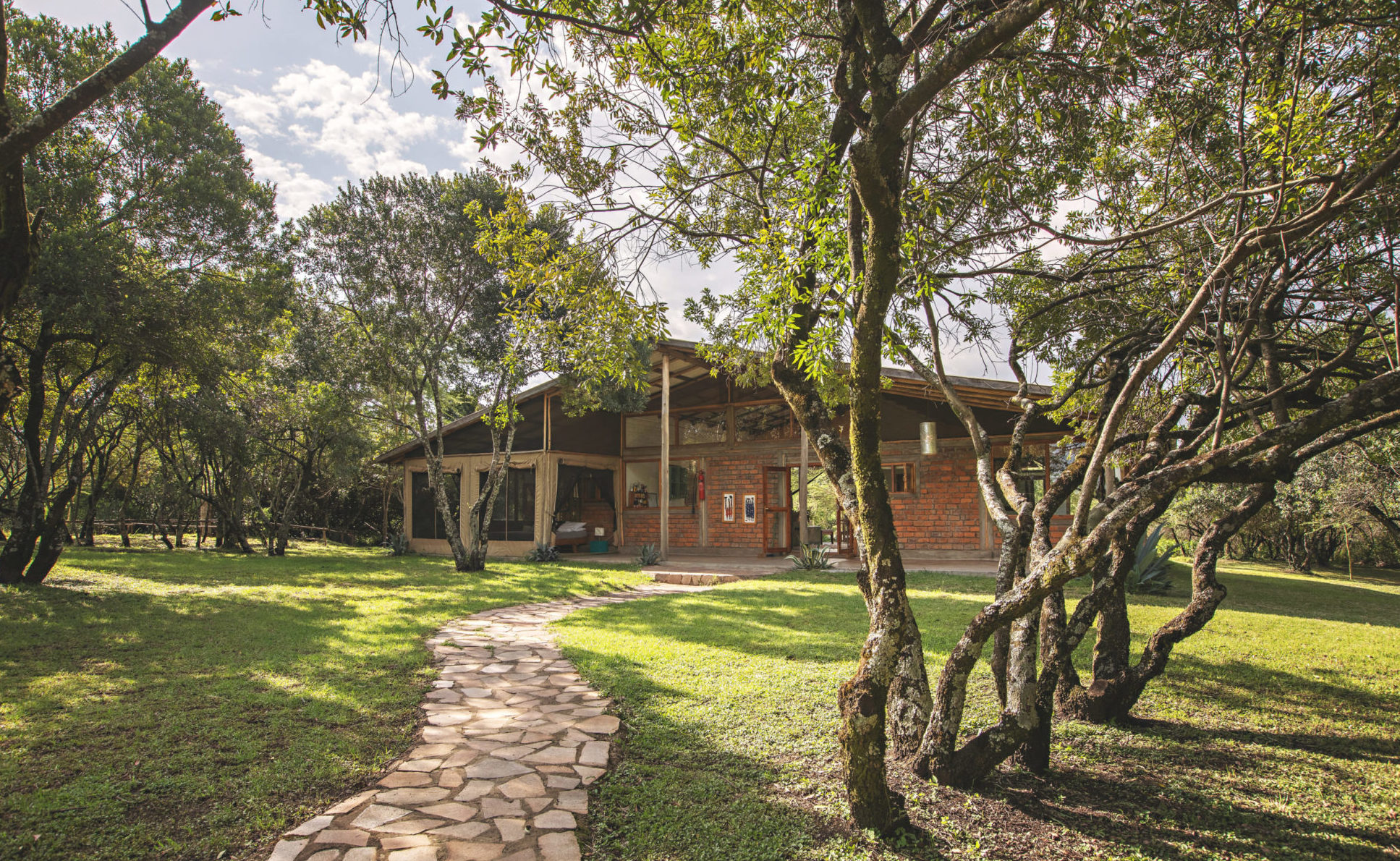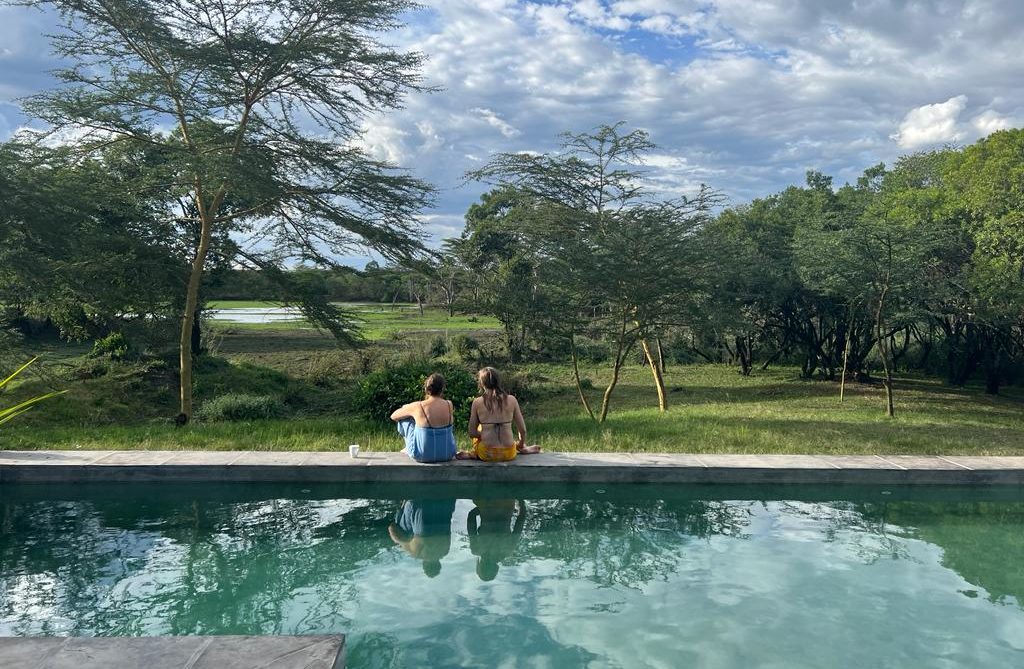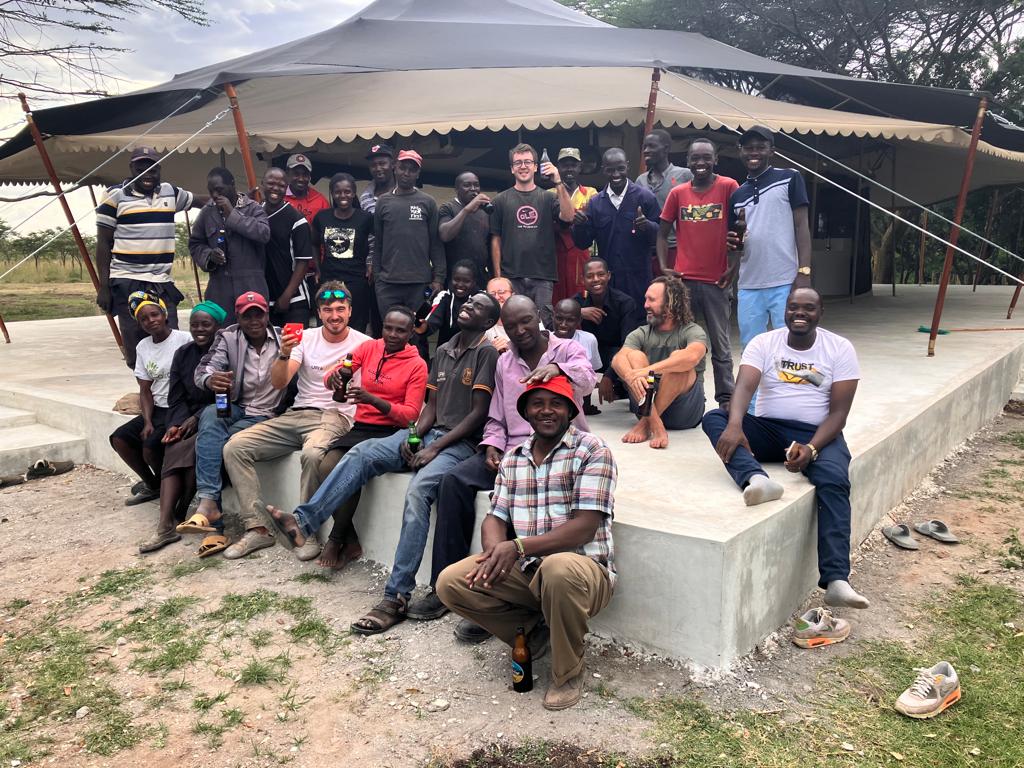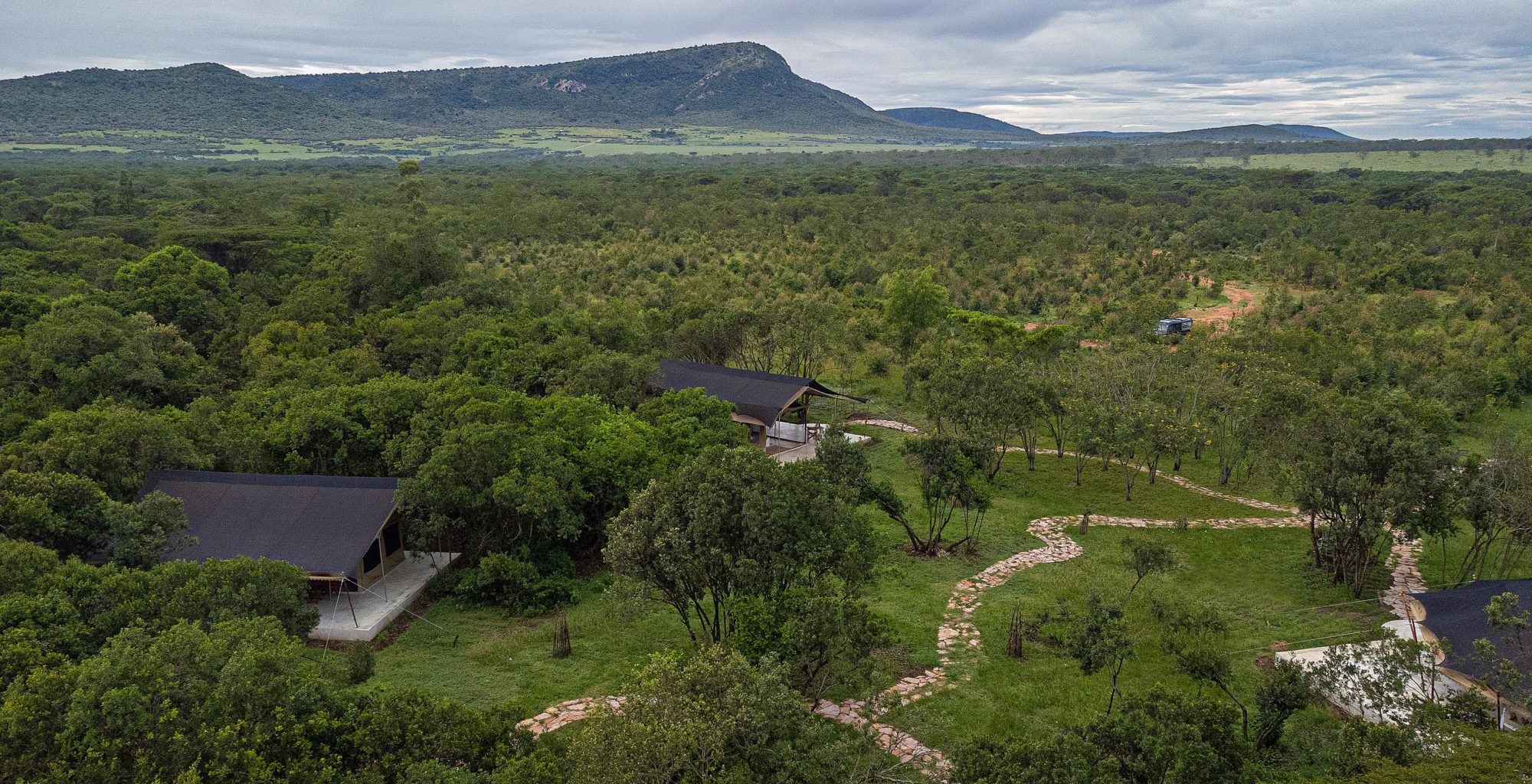Will Jones shares the backstory to the setting up of Kiserian Cottage & Bush Camp, which is located on Naretoi, a wilderness estate within the Enonkishu Mara Conservancy on the northern border of the Maasai Mara.
What made you decide to set up camp in Naratoi?
We bought Kiserian in 2014 when an opportunity arose to invest in a rewilding project on the edge of the Mara. I had first stumbled across the idea on a Christmas holiday on the coast when neighbours, Hugo and Rachel Wood, mentioned that their son Tarquin was working on a new project in the Mara. By total coincidence, my mother-in-law also got wind of it and suggested we take a look.
So I tagged a couple of days onto a safari I was guiding and spent three hours in the rain trying to work out what the plan was on the back of Tarquin’s quad bike. We were crawling through undergrowth in thick rain so could not see a thing as Tarquin explained plans for an old dam to be converted. I think Tarquin felt the pitch wasn’t going well and conditions were against him but was taken aback when we said we would buy two plots. And so the journey began as one of the very first investors in Naretoi, a 1,500-acre green bean farm.

Tell us a little bit about the concession, how the model works, and the changes you’ve seen since you’ve been here.
Naratoi was bought from the local Masaai to Tarquin’s grandfather, Sir Michael Wood, founder of Amref Flying Doctors, in the 1940s, and turned into a maize and runner bean farm. It went up for sale in 2013, and Tarquin and his wife Lippa borrowed to buy it off the family with the intention of rewilding it in a similar fashion to how they and their Masaai partners had, and continue to, rewild Enonkishu, the conservancy on which Naratoi sits.
Fast forward seven years and the landscape has changed beyond recognition – lion, elephant, even cheetah last month. Regular leopard. The place has truly been rewilded from what was essentially an underperforming 2,000 farm to a highly productive area of natural capital. We pay homeowners fees to maintain the private concession and a much larger conservancy fee to maintain our commitments to the conservation and management of what is known as the Northern Mara Conservancy, which includes the conservancies Enonkishu, Ol Chorro, and Lemek – 40,000 hectares large and capped at 44 vehicles.

You decided to build a family home. What made you decide to open that up to the travelling public?
We opened up our home to friends and family and the occasional guest. To add value to the land, we need to make sure that the opportunity to raise further funds for conservancy fees, employment of rangers, and stimulate local markets through the purchase of local goods remains strong. The home is also a superb operational and spiritual base from which to engage with my two core destinations – Kenya and Ethiopia. I have a long-running relationship with Ethiopia, which I will never happily be free of – so being close to them to support as best I can also helps.
Tell us a little about the design of Kiserian. What were your inspirations, was it a back of a postcard kind of a thing, or did you bring in professional design help?
The cottage was the first to be built in February 2015, which had no plans. We copied from a friend of mine who had something similar – thanks Will Carr-Hartley! Built very inexpensively, we have been slowly improving the cottage with the addition of a swimming pool, which now attracts hippo and elephant.
The bushcamp, meanwhile, started in November 2022 and is now broadly complete. My wife, Laura, has just completed a functional health retreat there as part of her Wild Your Health initiative. Things are taking shape as we enter the second half of our lives and plan to spend three months a year in the country. Laura, a medic, plans to engage with local health facilities and build traditional health awareness. It’s an exciting time.

You’ve now been open a year. How did you position it in the market? How goes everything vis a vis guest numbers? What’s the feedback?
Things are going well, thank you. In terms of positioning, we wanted to make it as accessible as possible, and so the camp’s priced at the entry-level market – meaning it probably represents about one-third the cost of normal/comparable camps and lodges we use at JbD. Numbers have been really good – I can’t tell you how many off the top of my head, but it’s felt nice and busy, and the feedback has been great. Everyone to do with the property has a lot of experience in the industry, which helps – that and the fact that it contributes to the conservancy, the greater conservancy, and so to the Mara in general. I just love it.
If anyone wants to know more about renting the cottage and camp, do drop Will an email direct. Anything else about Enonkishu and the wider work being done in the name of the Mara, see the partner page on Wild Philanthropy.
